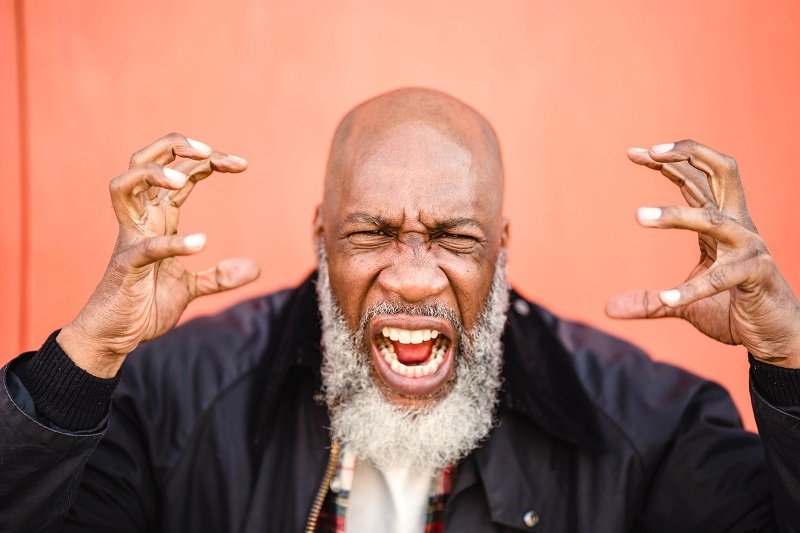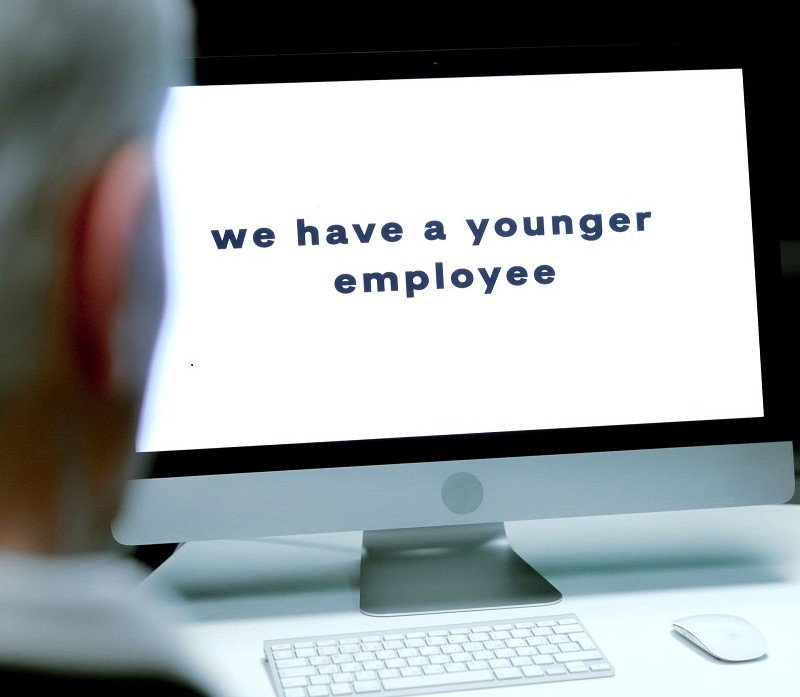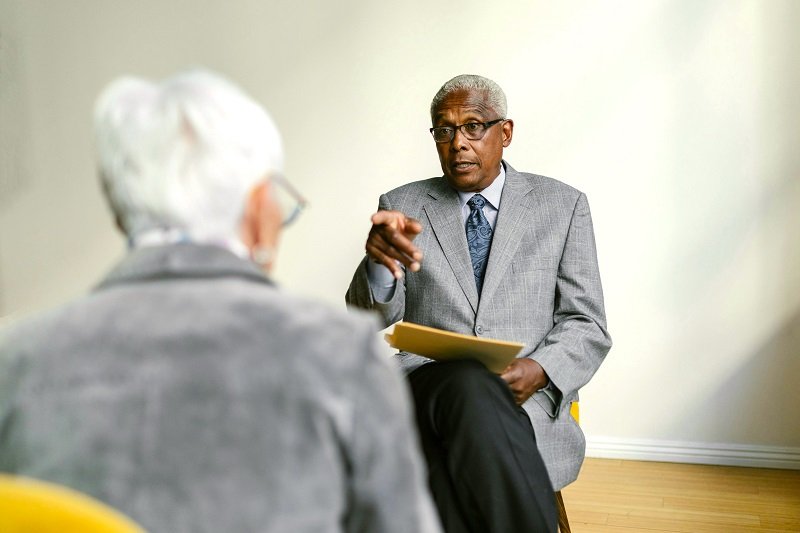Last Updated on June 30, 2025 by Julian Espinosa
Have you ever been treated differently simply because of your age? Age discrimination—or ageism—is a pervasive yet often overlooked form of prejudice that affects millions of seniors worldwide. Despite being as harmful as other forms of discrimination, ageism remains stubbornly normalized in our society, hidden in everyday interactions, media portrayals, and workplace policies.
Recent research reveals the shocking truth: according to the World Health Organization’s Global Report on Ageism, more than 50% of people hold moderate to high ageist attitudes, making it one of the most accepted forms of prejudice today. Even more concerning, experiencing ageism is linked to a 15.7% increase in depressive symptoms and significant negative impacts on physical health and longevity.
This article equips you with powerful, actionable strategies to counter age discrimination in your daily life. You’ll discover how to build meaningful intergenerational connections, leverage your experience through mentoring, effectively address discriminatory remarks, defy limiting stereotypes through proactive living, and cultivate a positive mindset that celebrates the unique advantages of your life stage.
Age discrimination may be common, but it isn’t inevitable. With the right tools and mindset, you can help dismantle ageist attitudes while embracing your journey with confidence and purpose. Are you ready to transform how you respond to ageism?

Prefer to listen rather than read?
What is Age Discrimination?
Age discrimination, or “ageism,” is the stereotyping, prejudice, or discrimination against individuals based on their age — particularly when directed toward seniors. Like all prejudices, ageism stems from the flawed belief that people who differ in some way are somehow less valuable or capable.
Have you noticed how some people get treated differently simply because they have more life experience? That’s age discrimination, and it’s far from harmless. It occurs when people make assumptions or judgments about others based solely on age, especially affecting those in their retirement years.
What makes ageism particularly insidious is how seamlessly it’s woven into the fabric of our society. Unlike other forms of discrimination that often face public outcry, ageist attitudes frequently go unchallenged or even noticed. It hides in plain sight, accepted as “normal” or even humorous.
You might spot it in the supposedly light-hearted birthday cards joking about declining abilities. You’ll find it in marketing campaigns for “anti-aging” products that frame natural aging as something to be combated rather than embraced. Even seemingly innocent phrases like “you look great for your age” carry the subtle implication that aging normally would mean looking less than great.
What makes this particularly troubling is that today’s critics of older adults will eventually join their ranks if they’re fortunate enough to enjoy a long life. In essence, they’re setting the stage for their own future mistreatment.

Where Is Age Discrimination Coming From?
Understanding the roots of age discrimination is essential for combating it effectively. This form of discrimination can manifest in various environments, from the workplace to social settings, and understanding its origins can help us address it more effectively.
Cultural Stereotypes and Misconceptions
One of the primary sources of age discrimination stems from deeply embedded cultural stereotypes. Society often portrays seniors as less adaptable, less innovative, or less valuable contributors. These misconceptions persist despite substantial evidence to the contrary.
At the 2025 Stanford Century Summit, experts emphasized the importance of intergenerational collaboration in the workplace. They highlighted that age-diverse teams can leverage the unique strengths of different generations, fostering innovation and enhancing problem-solving capabilities.
Despite these benefits, persistent stereotypes—such as viewing older workers as “tech-challenged” or “set in their ways”—continue to influence perceptions and interactions with older adults in professional settings.

Workplace Policies and Practices
Age discrimination continues to be a significant issue in professional settings, often stemming from outdated workplace policies that fail to reflect today’s diverse and aging workforce. Despite legal protections, subtle forms of ageism persist in hiring, promotion, and professional development opportunities.
According to a 2023 study by the Society for Human Resource Management (SHRM), nearly one-third (30%) of U.S. workers reported feeling unfairly treated due to their age at some point in their careers. Additionally, 32% of HR professionals acknowledged that an applicant’s age influenced hiring decisions within their organizations. Common manifestations of age bias include:
- Job postings that use terms like “digital native” or “energetic,” which can implicitly favor younger candidates.
- Recruitment strategies that focus on platforms or events predominantly attended by younger individuals.
- Limited training opportunities for older employees, based on assumptions about their adaptability.
- Promotion practices that prioritize youth over experience.
The U.S. Equal Employment Opportunity Commission (EEOC) has also observed a rise in age discrimination cases. In fiscal year 2023, the EEOC filed 143 new employment discrimination lawsuits, marking a more than 50% increase from the previous year. Among these, 25 were systemic lawsuits addressing patterns of discrimination, including age-related biases.
These findings underscore the need for organizations to reassess and update their policies to foster an inclusive environment that values employees of all ages.
Economic Factors
Economic pressures can exacerbate age discrimination in the workplace, particularly during financial downturns when companies may target higher-salaried employees—often more experienced workers—for layoffs. This practice not only undermines the value of seasoned professionals but also perpetuates stereotypes about older workers’ adaptability and productivity.
Research indicates that older workers face unique challenges in the labor market. For instance, a study by the Center for Retirement Research highlights that older workers tend to drop out of the job search process more quickly, leading to longer periods of unemployment compared to their younger counterparts.
This extended unemployment can result in older individuals accepting lower-paying positions or exiting the workforce prematurely, further reinforcing negative perceptions about their workplace value.
Moreover, data from the U.S. Equal Employment Opportunity Commission (EEOC) shows that age discrimination remains a persistent issue. In fiscal year 2023, the EEOC filed 143 new employment discrimination lawsuits, marking a more than 50% increase from the previous year. Among these, 25 were systemic lawsuits addressing patterns of discrimination, including age-related biases.
These findings underscore the need for organizations to reassess and update their policies to foster an inclusive environment that values employees of all ages.
How is Age Discrimination Affecting Older People?
Age discrimination, while often underreported and unnoticed, has a profound effect on older individuals in the workforce. Recent research by SHRM (Society for Human Resource Management) in 2023 highlights that nearly one-third of U.S. workers have felt unfairly treated at work due to their age.
Such experiences not only undermine professional confidence but also foster a workplace environment that could prompt older employees to consider leaving their jobs prematurely. This trend is particularly concerning in today’s economic climate where many are opting to delay retirement, thus contributing to a multi-generational workforce.
Ensuring that workplaces value and integrate employees of all ages is crucial for fostering inclusive and supportive work environments.

Depression and Thoughts of Suicide
Becca Levy, a professor of epidemiology at the Yale School of Public Health, conceptualized and led the massive endeavour. She had been studying the issue of age discrimination – which is also called ageism – at an individual level for years but wanted to learn more.
“We found evidence of ageism in every country we looked at, every year we looked at, and in every health domain we looked at,” says Levy. “The pervasiveness of it I found disturbing.”
In 85 percent of the papers included in the study, researchers found evidence associating age discrimination in instances where older people were restricted access to – or even denied – necessary healthcare treatments.
In 95 percent of the research reports, researchers presented convincing evidence to show that ageism has detrimental effects on the mental well-being of seniors.
In fact, the studies demonstrated a consistent pattern year after year: ageism contributed to an increase in depressive symptoms over time among older individuals. The impact was particularly apparent in psychiatric issues like depression and thoughts of suicide.

5 Ways to Counteract Age Discrimination
Not all the findings of the Yale study conveyed bad news. Levy and her colleagues also found some evidence suggesting that countering ageism helped to reverse many of the harmful consequences of age discrimination.
The researchers noted that the studies suggest that a more positive perception of old age helped seniors experience less anxiety and suicidal thoughts.
The collective data also suggests that improving education for healthcare providers about age-based bias could mitigate some of the negative health effects of age discrimination against older people.
“To combat ageism, we must shift our mindsets and challenge the narrative of older people as frail, dependent and vulnerable,” says Commissioner Bachelet.
Given that general goal, below are 5 ways to counter age discrimination against seniors.
1. Build Strong Intergenerational Bonds
Building connections between different generations can be a powerful way to combat age discrimination. It is essential to engage in face-to-face interactions with individuals from various age groups to foster understanding and empathy.
By actively participating in conversations with family members and members of your local community who may belong to different generations, you can break down stereotypes and help others see beyond their preconceived notions. When you engage in intergenerational dialogue, you have the opportunity to learn about the opinions and values of younger people while sharing your own experiences and viewpoints.
This kind of exchange can lead to a deeper appreciation of each other’s perspectives and values. For example, younger generations may offer insights into the latest trends and technologies, while older individuals can provide wisdom and guidance based on their life experiences.
Moreover, building connections across generations can reveal similarities in beliefs and lifestyles, as well as highlight differences in attitudes toward technology and other societal issues.
By keeping an open mind during these conversations, you can gain a broader understanding of the diverse perspectives that exist within different age groups. Ultimately, fostering connections between generations is not only beneficial for combating age discrimination but also for promoting mutual respect and understanding among people of all ages.
By actively engaging in intergenerational interactions, you can contribute to creating a more inclusive and harmonious society where individuals are valued for their unique experiences and perspectives.

2. Take on a Mentoring Role
Devote yourself to the mentoring role by participating in mentorship programs and online mentorship services. Share your skills, education, experience, and knowledge with younger individuals.
This act of passing on wisdom and guidance will not only benefit the young but also help you establish a sense of purpose and fulfillment, which ultimately helps you build your personal resilience.
Establishing a meaningful connection with younger individuals can create a more inclusive environment, as well.
Your connection will demonstrate the value of diverse perspectives and experiences and prove that age need not prevent young and old from learning from each other.

3. Address Discriminatory Remarks When and Where You Encounter Them
Age discrimination against older people is a pervasive issue that can have serious consequences on individuals’ mental and emotional well-being. By actively challenging stereotypes related to age, we can help combat this harmful behaviour.
One way to do this is by speaking up when we hear someone making derogatory comments about older individuals. By not letting these remarks go unchallenged, we can help educate others about the harmful effects of ageism and promote a more inclusive and respectful society.
You can counter stereotypes by calmly educating the biased. If someone says old people cannot learn new things, tell them how learning new things keeps you sharp and clever.
If a work colleague suggests that older people are technologically inept, point out how older adults use technology every day, whether to stay connected through social media, by mastering smartphones, or by using technology at work.
Furthermore, it is essential to advocate for policies and laws that protect older individuals from discrimination in the workplace, healthcare, and other areas of life. By supporting legislation that prohibits age-based discrimination and promotes equal opportunities for older people, we can create a more just and equitable society for all generations.
Be calm. Don’t be hostile or combative. You can play a vital role in shifting perceptions by reminding friends and family that older individuals lead vibrant, active, and fulfilling lives.

4. Defy Stereotypes Associated with Old Age by Being More Pro-Active
Challenging age-related stereotypes goes beyond speaking out against them. You should also strive to demonstrate a different message through your actions.
Strive to maintain your independence across various aspects of life. This could mean organizing outings or activities with close friends, engaging in hobbies that bring you joy and fulfilment, and making decisions that build your sense of autonomy.
Enrich your social connections by organizing regular gatherings, whether it’s meeting up at a local coffee shop or planning trips with your closest friends.
Defy the stereotype that older adults should lead sedentary lives by embracing active hobbies. Activities like gardening, camping, biking, or swimming not only keep you physically active but also promote mental well-being by providing a sense of purpose and fulfilment.

5. Focus on the Positive
Shifting your mindset away from negative beliefs about ageing becomes challenging when you concentrate on what you’ve lost rather than what you’ve gained. To combat these negative perceptions, focus on the positive.
For example, instead of dwelling on what you might perceive as losses due to aging, make a conscious effort to acknowledge and appreciate the advantages that come with getting older.
Have you become more assertive, decisive, and patient? Have you learned how to handle stressful situations better? Reflect on the skills you’ve learned and mastered over time.

It’s Never Too Late to Start
We began by saying that age discrimination against older people is a stubborn prejudice. It is stubborn because it is hardwired into – and deeply embedded in – our new youth-worshipping culture.
What makes age discrimination against older people an alluring stance for so many of the young and successful is that it helps them diminish a troubling reality with a soothing fantasy. As they say, a sweet lie is better than a painful truth.
Age discrimination helps the prejudiced young to forget taht they will one day become old, too. Plain and simple. Still, changing harmful biases against older people is going to be a long process. But in the US, at least, it’s starting to produce small but meaningful results.
Seniors should challenge, defy, and overcome age discrimination in others whenever they see it. More importantly, they need to try to get rid of their own self-defeating notions against old age. No, you’re never too old to try. What do you think?
Frequently Asked Questions About Age Discrimination
- How can I tell if I’m experiencing age discrimination in the workplace versus just being overlooked?
- Age discrimination in the workplace often follows recognizable patterns. Watch for these warning signs: younger colleagues with similar or lesser qualifications being promoted over you; exclusion from meetings, training, or social events; receiving age-related comments or “jokes”; being encouraged to retire; or suddenly receiving negative performance reviews after a history of positive feedback.
- Document specific instances, including dates, times, and witnesses, as this information can be valuable if you decide to address the situation formally.
- What laws protect seniors from age discrimination, and how effective are they?
- In the United States, the Age Discrimination in Employment Act (ADEA) prohibits discrimination against people 40 and older in employment contexts. Additionally, the Older Workers Benefit Protection Act (OWBPA) prohibits age-based discrimination in employee benefits.
- Many states have additional protections. While these laws provide important safeguards, proving age discrimination can be challenging, as it’s often subtle and disguised. The effectiveness of these laws depends largely on proper documentation, reporting procedures, and organizational culture. For the best protection, familiarize yourself with both federal and state laws in your area.
- How can I help an older family member who is struggling with internalized ageism?
- Supporting a family member dealing with internalized ageism requires patience and understanding. Start by acknowledging their feelings without judgment. Share positive examples of vibrant, engaged seniors who defy stereotypes. Encourage them to participate in activities that showcase their strengths and connect them with peers who maintain positive attitudes about aging.
- Gently challenge negative self-talk when you hear it (“Actually, I’ve noticed your memory for details is still quite impressive”). Consider suggesting resources like senior centers with empowering programs or books about positive aging. Sometimes, professional counseling can help address deeper feelings of worthlessness related to internalized ageism.
- What’s the difference between respecting seniors’ potential limitations and practicing ageism?
- The key difference lies in individuality versus generalization. Respecting limitations means acknowledging the specific needs or preferences of an individual based on their actual abilities, while ageism assumes limitations based solely on age. For example, asking an individual senior if they need help with a particular technology because they’ve expressed confusion is respectful. Assuming all seniors need tech help without evidence is ageist.
- The respectful approach treats each person as an individual with unique strengths and challenges, offers assistance rather than imposing it, and avoids patronizing language or tone. When in doubt, simply ask the person how they’d prefer to be supported rather than making age-based assumptions.
- How can younger generations become better allies in fighting age discrimination?
- Younger individuals can become powerful allies by first examining their own assumptions about aging and seniors. Seek out intergenerational friendships and mentoring relationships to gain perspective on the richness of older adults’ experiences. Use inclusive language that doesn’t stereotype based on age.
- Speak up when you witness ageist comments or jokes, explaining why they’re harmful. In workplace settings, advocate for age-diverse teams and highlight the unique contributions of experienced colleagues. Share positive stories about older adults in your life who defy stereotypes. Remember that advocating against ageism ultimately benefits everyone, as we all hope to enjoy our later years with dignity and respect.



